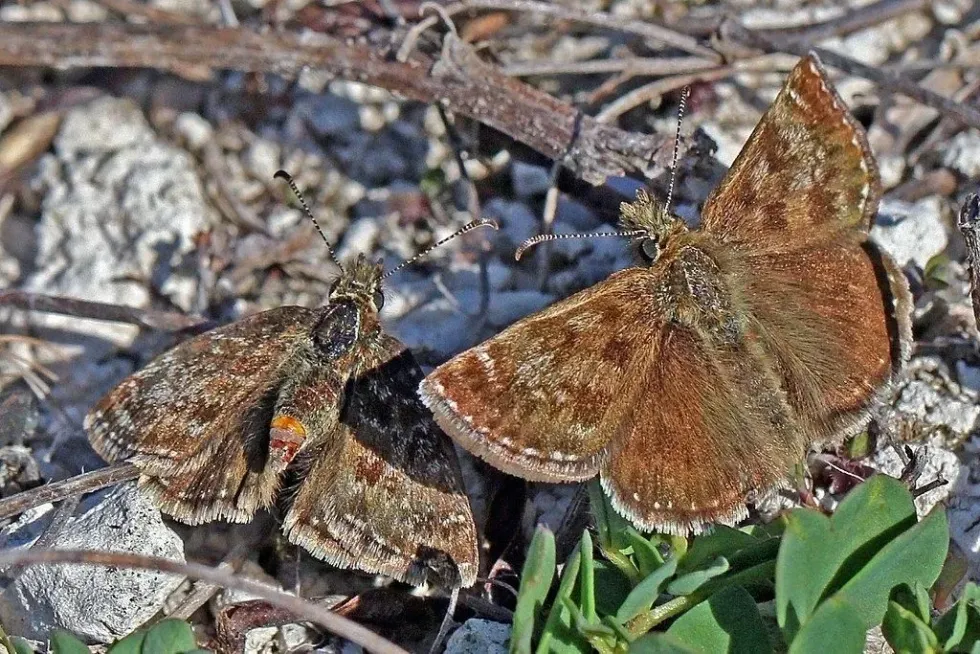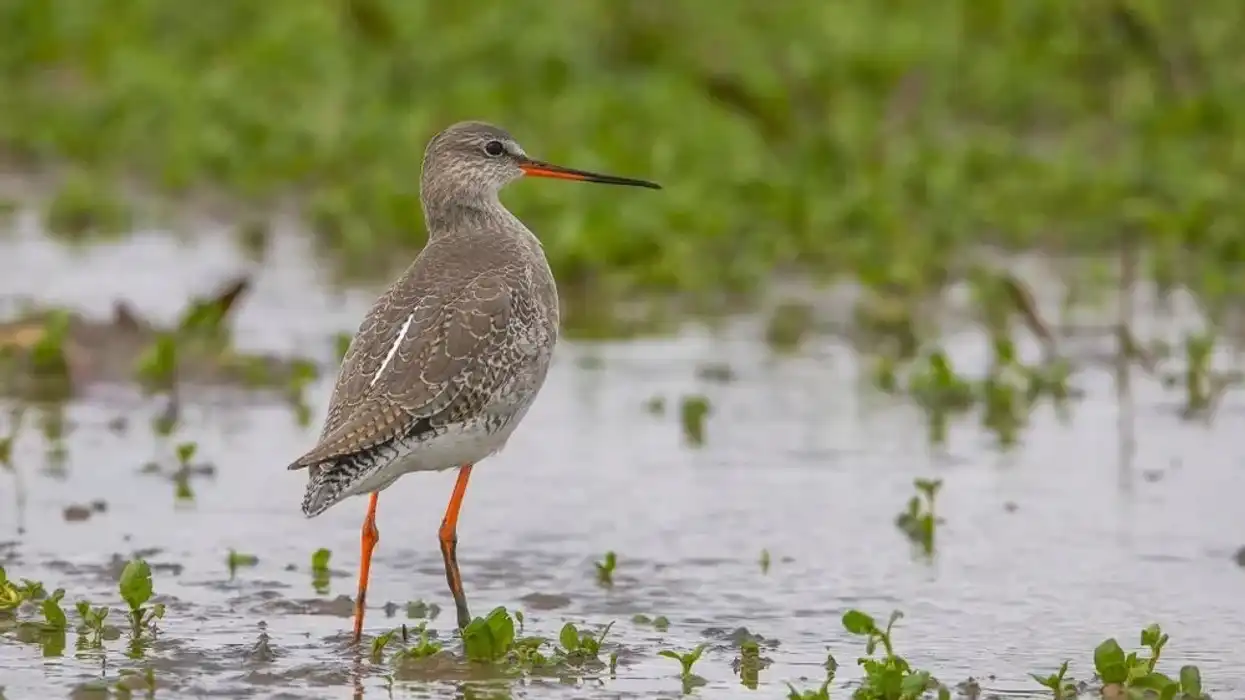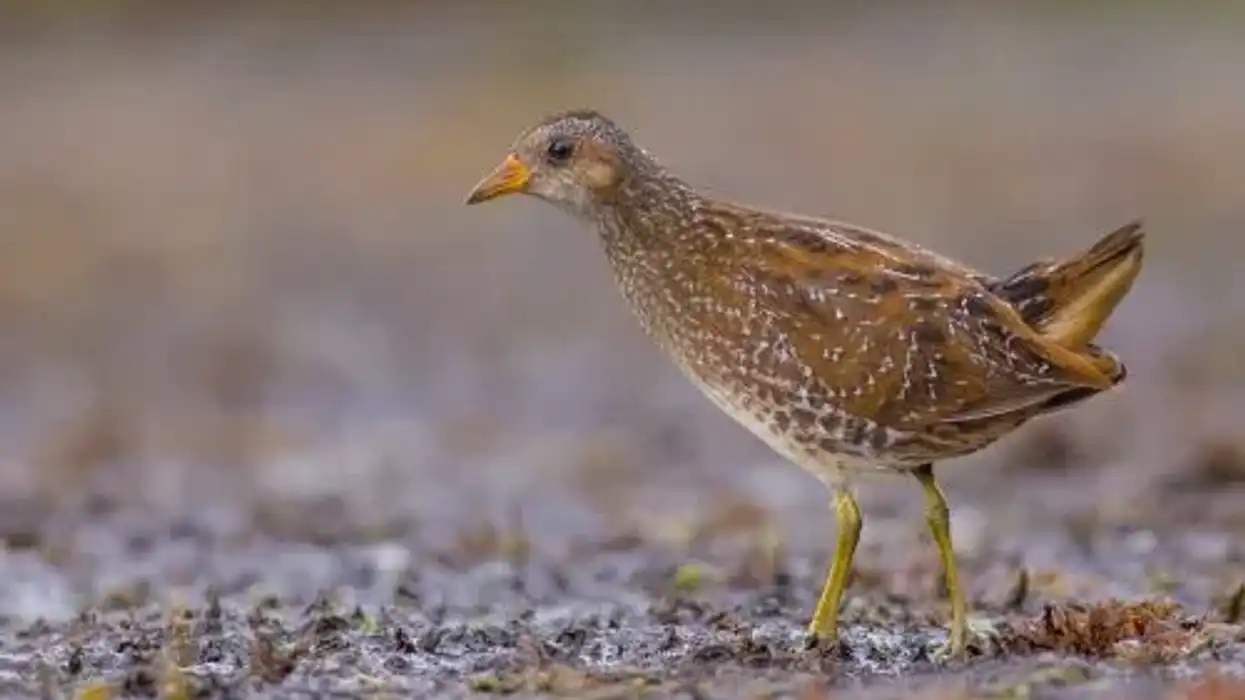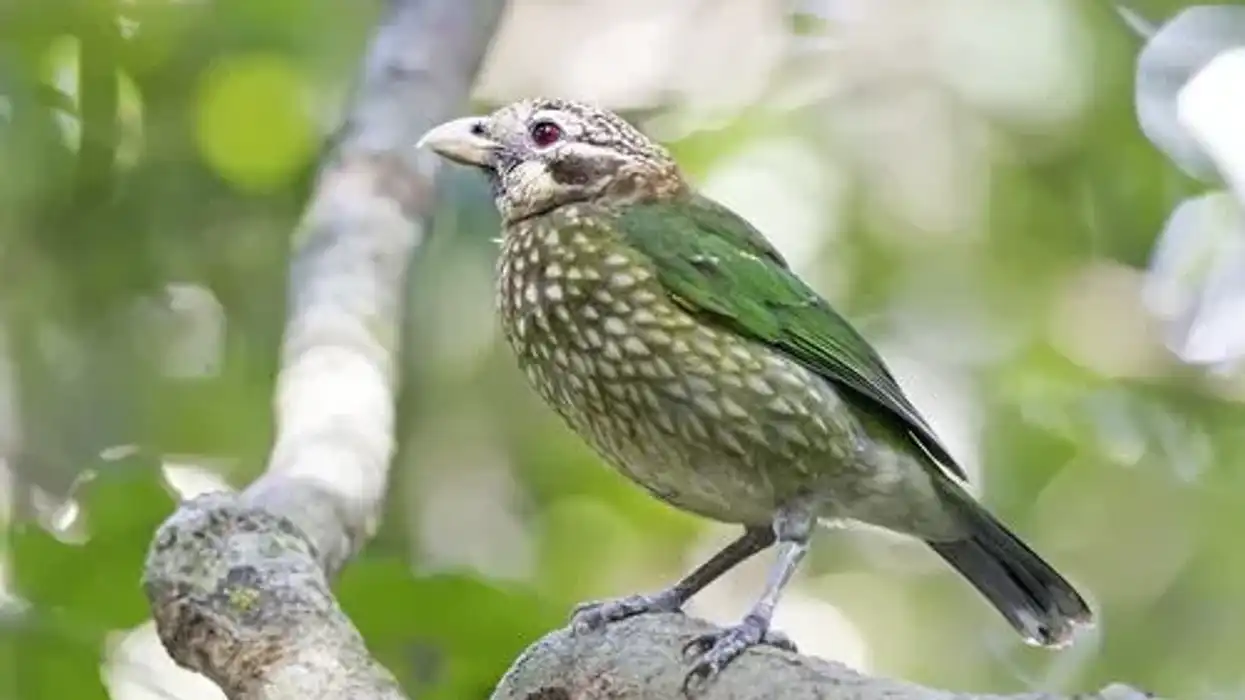Lepidoptera is the order comprising butterflies and moths which never fail to surprise us with the different patterns and colors on their wings. While butterflies fly in the sunshine, moths are speculated to be nocturnal.
These butterflies have four wings, not just two. Among 17,500 species of butterflies found throughout the world, a dingy skipper (Erynnis tages) is a moth-like British species of butterfly. The dingy skipper's name originated from the gray-brown markings on its upper wings that fade as it loses scales with age.
The moth-like butterfly is found throughout Britain and Ireland, concentrating mainly in England. It is quite similar to the grizzled skipper, Mother Shipton moth, and burnet companion moth.
It is documented to report one subspecies, the Erynnis tages unicolor, inhabiting Transcaucasia.
While it is well-camouflaged with mottled markings, it has a wide range of habitats including open and chalk grasslands, heathland, railway lines, bare ground, woodland clearings, sand dunes, abandoned quarries, and waste ground. The distribution of this small butterfly varies as it is scarce in Scotland, while is speculated to be Extinct in Northern Ireland.
If the uniqueness of the dingy skipper makes you interested to read more about similar species, you can read about the red admiral butterfly and the painted lady butterfly.
Dingy Skipper Interesting Facts
What type of animal is a dingy skipper?
The dingy skipper (Erynnis tages) is a small moth-like butterfly having a low darting flight. It is one of the British species of butterflies. It is often confused with the grizzled skipper, Mother Shipton moth, and burnet companion moth. It also has a subspecies first documented in 1852 by Freyer, the Erynnis tages unicolor.
What class of animal does a dingy skipper belong to?
The dingy skipper belongs to the phylum Arthropoda, class Insecta, order Lepidoptera, family Hesperiidae, and genus Erynnis.
How many dingy skippers are there in the world?
Neither is the conservation status of the dingy skipper is evaluated nor is the estimated population of these butterflies quantified. This butterfly is found in several countries of Europe and Asia. It has a patchy distribution in Britain, while is considered Extinct in Scotland and Northern Ireland.
On the other hand, these butterflies range in different counties of England. The population is on a decline in several European countries such as Armenia. Considering and speculating the declining number, the dingy skipper is listed as priority species.
Where does a dingy skipper live?
The populations of these butterflies, dingy skippers, range in various European and Asian countries. While this butterfly can be spotted in Britain, it is quite uncommon in Ireland and Scotland. On the other hand, the population is on the decline in different European countries. Furthermore, the subspecies of the butterfly, the Erynnis tages unicolor, is found in Transcaucasia.
What is a dingy skipper's habitat?
The small, well-camouflaged dingy skipper butterfly prefers a wide range of habitats. While the primary habitat of the brown and gray butterfly is open meadows growing caterpillar foodplant, such as the bird's-foot trefoil (Lotus corniculatus).
Also, this butterfly is found in open and chalk grasslands, heathland, railway lines, bare ground, sand dunes, abandoned quarries, and waste ground. While it lays eggs on the leaf that becomes the primary source of food for the larva, the adult dinky skipper perches on dead flowerhead during the night in dull weather.
Who do dingy skippers live with?
Mostly, dingy skippers individually feed on the nectar of bird's-foot trefoil (Lotus corniculatus), the butterflies live in discrete colonies. Also, adult male and female species are found in and around their favorable habitat in pairs.
How long does a dingy skipper live?
While the butterflies take considerable time to develop into adults through metamorphosis, the lifespan of the adult butterfly is speculated to be limited and the species are short-lived. On the contrary, the monarch butterfly lives up to nine months.
How do they reproduce?
While the male and female species roost on a dead flowerhead mostly at night, the eggs are laid by the female on the base of leaflets. The eggs are greenish-white that transforms into orange and eventually hatches into caterpillars that feed upon leaves. The dingy skipper caterpillar is green with a brown head.
The dingy skipper caterpillar spins leaves together and creates a shelter. The primary foodplant of the dingy skipper caterpillar is the birds'-foot trefoil.
These caterpillars pupate in the spring and emerge as adults in May. The butterfly is on its wing by June. Also, it may have a second brood in August in its favorable habitat.
What is their conservation status?
While the dingy skipper is not listed under the IUCN Red List of Threatened Species, the species remains Not Evaluated. It is categorized as a priority species in Ireland considering its decline and conservation concern.
Dingy Skipper Fun Facts
What do dingy skippers look like?
The dingy skipper has a dull brown and gray plumage. It is a well-camouflaged butterfly with a distinctive pattern on each wing. It is very similar to the grizzled skipper, Mother Shipton moth, and burnet companion moth. It has mottled markings with white spots. The eggs laid are green-white and uniformly turn orange with time.
The caterpillar develops changes with time and does not have the adult dingy skipper appearance. Mostly, the head is olive-brown and the wing is green.
How cute are they?
Butterflies and moths are mostly cute and attractive. The butterfly has a distinct pattern on either wing and the dingy skipper is a pleasant sight. The dingy skipper's appearance is unique. Also, caterpillars pupating in spring on plants such as bird's-foot trefoil is another sight to behold. The blue morpho is one of the cutest butterflies.
How do they communicate?
While the dingy skipper is speculated not to communicate, it often uses gestures and motions to mate with its partner.
How big is a dingy skipper?
The size of the dingy skipper is not recorded. Neither the weight nor the length or wingspan is known. It is speculated to be a small moth-like butterfly among the subgroup of skippers. It is comparatively smaller than the pipevine swallowtail.
How fast can a dingy skipper fly?
The dingy skipper is one of the fastest flying butterflies. The butterfly has a low darting flight. Similar to other skippers, it also has an extremely fast flight often stays close to the ground.
It is mostly spotted flying during April to June. It flies in two generations, initially from May to June and then, July to August. One of the fastest flying moths are hawk moths including five-spotted hawk moths.
How much does a dingy skipper weigh?
The weight of the dingy skipper is not known, but it is speculated to have negligible weight.
What are the male and female names of the species?
Dingy skipper sex does not change the names of these butterflies. They are called male dingy skippers and female dingy skippers.
What would you call a baby dingy skipper?
Baby dingy skippers are often called larvae or caterpillars.
What do they eat?
The adults primarily feed on the nectar of the plant. The main food plants are bird's-foot trefoil, buttercup, hawkweed, and vetch. They also eat bugle and ragged-robin. Caterpillars feed on the nectar of the bird's-foot trefoil.
Are they dangerous?
No, the dingy skipper is one of the most admirable butterflies and it does not possess any danger. It acts as a central pollinator to the plant. The dingy skipper is also listed as species of principal importance under the NERC Act in England.
Would they make a good pet?
No, moths and butterflies are free creatures and are not advised to be petted. They are best kept in the wild or their natural habitat.
Did you know...
The dingy skipper has a subspecies but is not well-defined. One of them is the Erynnis tages unicolor and was first documented by Freyer in 1852 in Transcaucasia.
It is often seen on its wing from May to June.
The population of the dingy skipper is patchily distributed, while it is declining in some European countries.
How do you identify a dingy skipper?
A dingy skipper is a small butterfly and is easy to spot with its gray and brown wings having mottled markings. Also, the two rows of white spots under its reddish-brown under-wings can only be spotted in a dingy skipper, differentiating it from its similar species like the grizzled skipper, Mother Shipton moth, and burnet companion moth.
What role does a dingy skipper play in the ecosystem?
The species in the order Lepidoptera, butterflies and moths, act as pollinators. While the specific role of the dingy skipper is not specified, it is a central pollinator for several crops grown in its habitat.
Here at Kidadl, we have carefully created lots of interesting family-friendly animal facts for everyone to discover! For more relatable content, check out these white admiral butterfly facts and viceroy butterfly facts for kids.
You can even occupy yourself at home by coloring in one of our free printable butterfly coloring pages.
Main image by Charles James Sharp
Second image by Charles James Sharp










